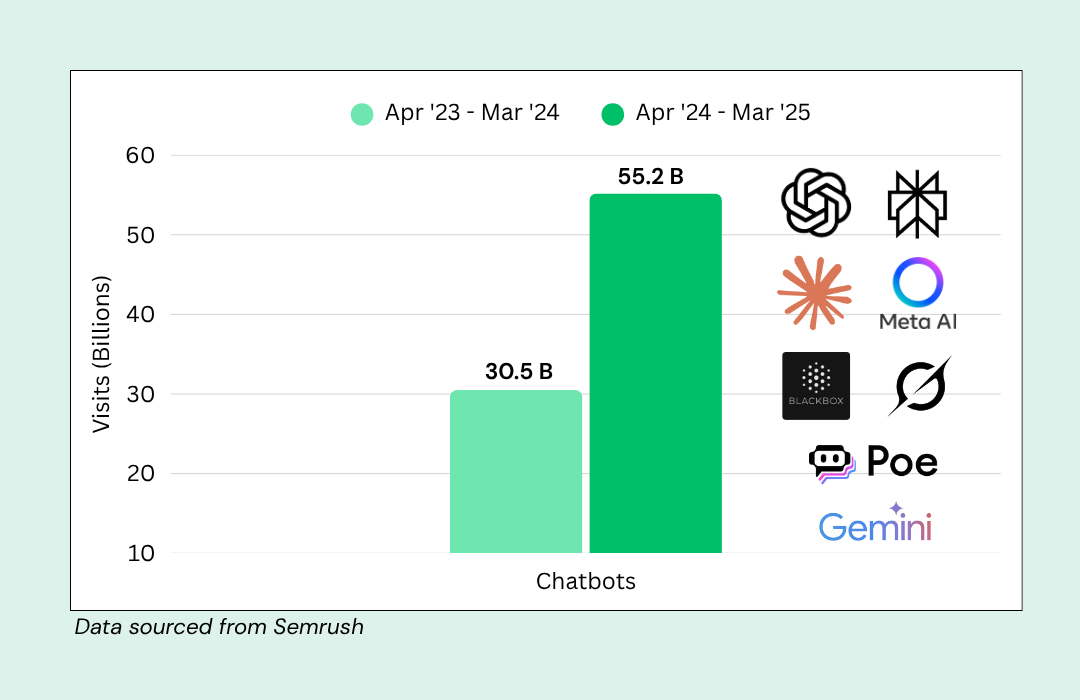In sales, it’s normal to deal with slow seasons, bad seasons, and horrible seasons. But none of those compare to the current situation.
The COVID-19 outbreak has been hitting the world where it hurts since February, ultimately affecting our lifestyles, our plans, and, naturally, our businesses.
This is a lot to take in and adjust to. What to expect? Is there a future for your sales and company? How do you compensate for the lack of B2B face-to-face meetings?
We decided to address these concerns and provide you with some tips on adapting your sales and workflow to the current conditions.
What Is Happening Right Now?
When it comes to answering the question, “How bad is it?” you’ll find plenty of polarized opinion. While it’s not the first virus outbreak humanity has had to deal with, the measures and restrictions required to overcome it provide a serious challenge to business communication and production.
According to the research by McKinsey & Company, there are three scenarios of COVID-19 affecting the world economy.
Scenario 1: Quick recovery
- The crisis ends during Q1
- Customer confidence is recovered by Q2
- No new cases occur
- Travel bans are lifted early, and aviation and tourism go back to normal
- Businesses go through Q2 and enter Q3 and Q4 with their demand regained and customer confidence restored
This is a very optimistic scenario — and sadly, it’s not what’s currently happening.
Scenario 2: Global slowdown
- The growth of the virus stops in the beginning of Q2
- Major economic areas are strongly affected
- Customer confidence returns at a much slower pace and only in Q3.
- Only consumer-oriented industries are able regain the demand quickly
- Travel bans are lifted mid-Q3
- Q4 sees a return to normalcy
This scenario is more realistic, but still, it’s not what we’re observing right now.
Scenario 3: Global pandemic and recession
- The middle of Q2 sees some progress of the containment of the local outbreak, but COVID-19 manages to spread to other countries
- Demand and customer confidence remain low due to uncertainty
- The travel bans remain in place until the end of 2020, leaving aviation and tourism completely frozen
- The economy is largely affected by the setback and lack of customer confidence
This scenario is the one that is happening right now. A growing pandemic, new strict travel limitations, long-term ban on tourism, a decrease in customer confidence — everything indicates that it will take awhile before we can talk about returning to normalcy.
RELATED: How to Adapt to the New Sales Environment: A 2-Step Approach to Navigating COVID-19
That means you don’t have to focus on enduring the new conditions. You must think about adapting to them and helping your business stay afloat. You also need to think more broadly about how you can help your community and tribe, which includes you, your team, and your customers.
Take Care Of Your Team
How do you take care of your team when it’s dispersed? Fortunately, we’ve got technology that let’s us stay in touch. But there’s more to it than chatting with one another or keeping everyone updated.
Make sure your employees are fully educated about COVID-19, from symptoms to safety guidelines.
It’s important for you to be the bridge between your teams and public media because, unlike the latter, you’re interested in keeping your teams informed, not panicking. Your teams don’t need to be reminded that the virus is deadly. They should, however, fully understand COVID-19 and how to stay safe during the outbreak.
Help your teams regain control.
Teach your local managers how to handle emergencies related to COVID-19, and instruct them on monitoring and implementing basic safety guidelines. People are viewing the coronavirus outbreak as apocalyptic. Your goal here is to help your teams treat it as a challenge that can be overcome.
Ensure two-way communication between you, your local managers, and your teams.
Don’t let any doubts, fears, or concerns take root in silence. Stay responsive to your employees’ requests.
Maybe your area hasn’t been asked to send workers home, so your workers are still commuting to the office. Your employees may still be scared. Don’t force them to work in the office if they’re uncomfortable with it. Not only would it increase health risks, but the added layer of fear could prevent your teams from focusing on their tasks.
Allowing a fraction of your departments to stay at home makes it easy to manage your working space and monitor safety guidelines — and as long as you are well connected to all your teams, your performance should remain optimal.
Create a response team that would assist you in monitoring your sales channels, your employees’ welfare, and contingency plan.
A coronavirus response team should consist of several leading experts who would represent each department in your company.
Their expertise should be your support in stress-testing your financial readiness and damage control — assuming you establish a firm timeline and a correct cadence.
Make sure not to build a plan for a month and roll with it. The tables can be turned any moment! You need short-term planning and flexibility to roll with the constant changes in this crisis.
Hold virtual meetings to discuss everything that will be done within the next 48 hours — or to see how your plan can be adjusted.
Get Digital
Let’s look at the bright side of things — 25 years ago, the outbreak would have been much more devastating to people and businesses worldwide.
Without options to keep in touch and exchange important information within mere seconds, many businesses would have been forced to either close down or stay at their workplace, ultimately contracting the virus and contributing to its spread.
And chances of business recovery would have been very slim due to major financial losses and buyer/customer decrease during the quarantine.
But now? Now you have a wide set of powerful tools to let you manage your tasks, your projects, and your teams without leaving home. Quarantine provides you with an opportunity to polish your ability to use them and discover new opportunities.
And if you think that we’re being overly optimistic, here are some facts from China:
While supermarkets and restaurants started seeing fewer visitors after the outbreak, the number of online purchases considerably increased. Due to the wide range of delivery apps and options to order all the necessary products online at the supermarket/restaurants’ website, the audience wasn’t lost. It merely changed the way it bought.
The use of messengers such as Zoom, WeChat Work, Dingtalk has increased considerably as many white collar workers start working from their homes. This new boom has expanded beyond business areas into Healthcare, Cybersecurity, Logistics, Telecommunication, etc.
Consumers in China, while not being fully confident about the outcome of the outbreak expressed their intent to continue making purchases.
Following the closure of universities and schools, digital platforms, such as Kuaishou, entered a collaboration with the Ministry of Education to offer free online lessons to ensure that students can keep up with the program.
As you can see, not only do digital channels allow you to adjust your business and keep your demand at acceptable levels, they also help you discover efficient ways to nurture new relationships.
So, What Can You Do?
Maximize your digital communication.
Most major events by Google, Facebook, and Apple got canceled, but it doesn’t mean that those businesses put their activities on hold. Neither should you.
RELATED: How to Manage a Remote Team (4 Fears You MUST Overcome)
Make sure to change your face-to-face meetings into Skype or Zoom calls before your prospects start canceling appointments. Reach out to them first and ask if they prefer a phone call or a Zoom meeting.
Expand the range of messengers you use. We always offer our customers to chat via Telegram, Viber, Slack, Zoom, Skype, and WhatsApp. If they prefer to use other messengers, we are always ready to implement them to ensure our accessibility 24/7.
Invest in new content.
Turn offline events into webinars. Create presentations with manuals and updates for your long-time customers. Make the most out of your business social media and LinkedIn influence. Right now, your potential partners are spending much more time online than they usually do, so they’re a lot easier to engage and connect with.
Unleash the skills of your in-house designers and creative teams and engage your audience with informative storytelling.
Stay visible.
Going off the radar is the worst thing you can do during the outbreak. Given the intensity of the situation, your prospects are not likely to remember you when everything is over.
If that happens, they won’t respond to your first post-outbreak emails because they will be preoccupied with other, more important matters. Staying top-of-mind via online channels and inbound marketing is important because it helps customer retention — and ensures that you will have an audience to work with once things are back to normal.
Focus on customer retention.
We’re not going to talk about generating new leads because we’re fully aware potential B2B buyers have become more cautious and less confident about making investments. So, shift your priorities to taking care of your existing customers and edit your sales forecasts.
We don’t mean cross-selling and reselling — unless you have an option to adjust your product to help with the coronavirus threat. You should start with something simple, such as a “Just checking up on you” email.
At this point, your goal is not to sell but to show your support. Offering small things, such as a free consultation or a collaboration, will be a good touch. Your customers appreciate being supported in this time of need.
Join the resistance.
Taking responsibility and doing your part in combating COVID-19 is not just your civil duty. It’s your way to secure your place.
During the outbreak, many businesses in China have switched to producing medical masks and uniforms, equipment, healthcare software, and navigation. This effort allowed them to overcome the crisis and guarantee a quick recovery after quarantine restrictions were finally lifted.
Think how your service or product can help. Maybe it’s time to add hospitals and medical research centers to your contact list?
Be Ready For The Worst
We lived by that rule even before the outbreak. It helped us to stay on our toes and come up with a plan as soon as we faced a challenge. Mostly, being ready for the worst-case scenario means knowing how to protect your company.
Know what you can give up.
You should track all of your sales channels and know which one you can shut down without hurting your business. If you monitor your seasonal activity and performance, this is low-hanging fruit.
Prepare liquidity scenarios.
It’s important to prepare several scenarios that revolve around your liquidity and different variables that may impact your revenue. Each scenario must come with a detailed analysis, triggers that can affect you, and measures to counter them.
Prepare for a long-term struggle.
Since we don’t expect conditions to improve much in the next couple of months, think about how you will address inevitable supply-chain disruptions. Keep track of alternatives, including suppliers that could compensate for shipment delays with your current suppliers, the state of aviation and freight networks, spikes in demand, etc..
Make sure to warn your existing customers about any delays in shipments (it will happen). Explore the regions that show demand for your product or service.
Keep Calm
Nothing lasts forever.
Even the COVID-19 pandemic.
Countries and economies have gone through many shocks in the last decade. Each time, they emerged with more knowledge, more experience, and more ammunition for the next crisis. So, our final advice is to stay collected and focused on:
- Your human connections
- Your ability to work with and exchange insights with colleagues and clients
- Helping them stand their ground
These relationships will help you make it through the toughest times — and allow you to rise once it’s time to rebuild and recover.
With enough discipline, flexibility and a smart use of digital opportunity, you’re guaranteed to keep your sales intact and ready for a boost.
Stay safe and take care!







